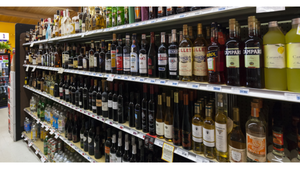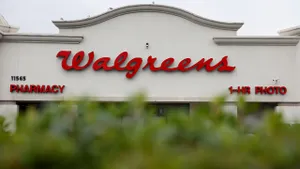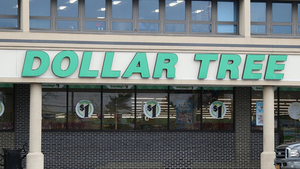CASE CLOSED?
Dos Filename %%sn13a41a.arc%%The first installment of this two-part report appeared in the Feb. 10 issue of SN.It was only a month ago when a circuit court judge in Cook County, Ill., ruled that consumers suing Jewel Food Stores and Dominick's Finer Foods failed to prove that Chicago's largest supermarket operators were conspiring to set milk prices artificially high.In the process, the public gained
March 31, 2003
Robert Vosburgh
Dos Filename %%sn13a41a.arc%%
The first installment of this two-part report appeared in the Feb. 10 issue of SN.
It was only a month ago when a circuit court judge in Cook County, Ill., ruled that consumers suing Jewel Food Stores and Dominick's Finer Foods failed to prove that Chicago's largest supermarket operators were conspiring to set milk prices artificially high.
In the process, the public gained a glimpse into the way prices are set, how promotions influence sales, and how chains compete against one another. In fact, both operators acknowledged they have long checked prices of staple items in competitors' stores. It's a common business practice throughout the retail world.
"We're not fixing prices; we're checking to make sure we're competitive on a very sensitive item," said Brian Dowling, a spokesman for Dominick's parent company, Safeway, Pleasanton, Calif., at the time the lawsuit was announced in 2000. "We do key our sensitive items, like milk, to what the competition is doing."
Gregory Lindstrom, attorney for Dominick's, told the judge hearing the case that as the No. 2 retailer in the market -- operating 118 stores vs. Jewel's 166 stores -- it has been Dominick's practice to send managers into Jewel stores in the first week of every month to monitor prices on basic necessities like bread, butter -- and milk. Jewel managers do the same.
"There are a lot of secrets in the grocery business, but the prices you post are not secrets," Bill Boies, Jewel's attorney, told the judge.
Indeed, the lawyers for the two retailers went on to say that competition actually occurs not on pricing, but on the promotional level. Milk's shelf price is often different at the front end because that's where the promotional discounts kick in, they said. An in-house analysis submitted to the court by one of the retailers determined that milk prices at Jewel and Dominick's differed at the register 25 times throughout March 2000.
"It's got nothing to do with getting on the phone in secret meetings with Dominick's," Jewel attorney Boies said.
In presenting opening arguments, Michael Connelly, attorney for families of law firm members, who acted as plaintiffs in the case, said he had "no smoking gun" to prove price fixing. However, he said memos from Dominick's and Jewel employees, and data showing Jewel and Dominick's raised gallon milk prices to $3.69 in the fall of 1999, when wholesale prices were falling, were evidence that the pair colluded on milk prices.
Robert Cropp, dairy marketing economist at University of Wisconsin - Madison, said maintaining higher retail prices while the wholesale drops is not necessarily indicative of any ulterior motive.
"We always get this criticism when farmers' prices are low and retail prices stay high," he told SN. "The retail does come down, but they vary by market. Looking at the country as a whole, they're down 2% or 3% from a year ago. Farm prices are depressed 25% or 30%."
At the trial, Jewel attorney Boies acknowledged Jewel's milk prices might be higher than competitors, including other supermarkets and convenience stores. That's not a crime, he argued.
"We're not a regulated utility," he said. "We're not required to move our prices up or down based on wholesale prices."
In a courtroom, that may be true, but industry observers are saying the court of public opinion may reach a different verdict -- and state lawmakers may affirm it.
"The dairy store probably has the largest profit margin in the whole distribution chain," said Pete Schuyler, a retired dairy farmer and former board member of Dairylea, a Syracuse, N.Y.-based cooperative.
"Everything a farmer buys is at retail price. Everything he sells is wholesale price. That's a no-win situation for them. Something's got to give eventually," he said.
Plans by several states, particularly in New England, to adopt some sort of legislation placing a cap on milk prices might mark that breaking point. But retailers have repeatedly stated that lower prices alone cannot boost sales of a commodity item that has enjoyed flat sales at best, and presently declining an average of 1.2% a year.
"We used to have more milk specials. We don't see that anymore," said Cropp. "It used to be someone like Kroger featuring 2% milk during one week might sell a lot of 2%, but less whole and skim milk. People would would respond to the lower price by which type [of milk] they'd buy, but they didn't necessarily buy more milk."
Without additional demand, milk sales will continue to suffer, he added. "Milk's been a very soft part of the dairy industry because people just don't drink as much as they used to."
Retailers agreed, saying the drop-off in demand, in turn, has pressed them to re-evaluate the product mix, sales space and, in particular, pricing strategies.
"There is a perception that lower milk prices would increase product demand," stated Caren Epstein, spokesperson for Hannaford Bros., Scarborough, Maine. "The reality is that milk prices vary, and lower prices would not translate into greater sales. Milk is one of those commodities that is simply not sensitive to price. People buy it when they need it. They don't start or stop based on price."
Retailers are treading carefully on the subject of price caps. Virtually all of them say the "competitive environment" is the best way to handle milk prices, and that additional regulations and laws are not needed. But the choice may be out of their hands.
One proposal, developed by Prof. Ronald Cotterill, director of the Food Marketing Policy Center at the University of Connecticut, called a "fair share" law, would kick in when the consumer price of milk exceeds 1.8 times what farmers receive. Then, half of the additional revenue that retailers receive would be collected from supermarkets and re-routed back to farmers as a subsidy.
Yet another actually levies a tax on big-box stores to support the farmers. In this case, there would be a 0.001% tax on revenues at stores larger than 10,000 square feet and located outside of traditional town centers. The funds are earmarked for dairy farms and also to reduce property taxes on agricultural land to protect it from development.
About the Author
You May Also Like




